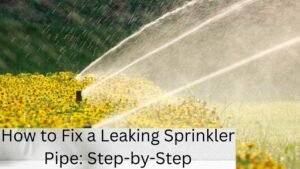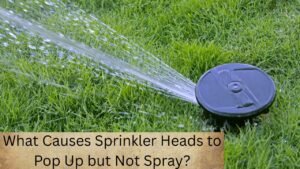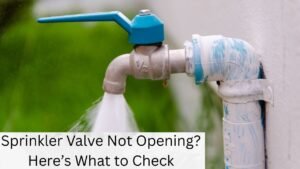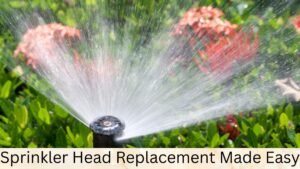Introduction
Imagine this: after investing time and effort into a lush, green lawn, you discover patches turning brown due to a leaking sprinkler head. This problem can lead to significant water waste and higher utility bills. Studies show that a single leaking sprinkler head can waste up to 25 gallons of water per hour. Not only does this waste precious resources, but it can also drive up your water costs. Luckily, repairing a leaking sprinkler head is manageable with the right knowledge. This guide will walk you through the repair process, ensuring your lawn remains healthy and your water usage stays efficient.

Understanding the Problem
Common Causes
A leaking sprinkler head can stem from several issues:
- Mineral Buildup: Over time, minerals from hard water can cause blockages or leaks.
- Physical Damage: Damage from lawn equipment or severe weather can crack or break the sprinkler head.
- Faulty Valves: Malfunctioning valves may fail to create a proper seal, resulting in leaks.
- Corrosion: Metal components, especially in humid or saline environments, can corrode and cause leaks.
- Improper Installation: Incorrectly installed sprinklers might not fit properly, leading to leaks.
- Debris: Small objects or debris lodged in the sprinkler head can obstruct water flow and cause leaks.
Signs of a Leak
Look for these signs to identify a leaking sprinkler head:
- Puddles or Wet Spots: Persistent wet areas or puddles on your lawn.
- Reduced Spray Pattern: Uneven water distribution or weak spray from the sprinkler head.
- Unusual Noise: Hissing sounds or erratic water spraying can indicate a leak.
Tools and Materials
Essential Equipment
For the repair, gather the following tools:
- Adjustable Wrench: For loosening and tightening fittings.
- Screwdriver: To remove or adjust screws.
- Plumber’s Tape: To ensure a watertight seal.
Optional Tools
- Pipe Wrench: Helps with stubborn fittings.
- Utility Knife: Useful for cutting old O-rings or debris.
Replacement Parts
You might need:
- New Sprinkler Head: If the old one is beyond repair.
- O-Rings: To replace worn-out seals.
For purchasing, you can find these parts at local hardware stores or online retailers like Amazon or Home Depot.
Step-by-Step Guide
Safety First
- Turn Off the Water Supply: Shut off the water to prevent additional leakage while working.
- Wear Gloves: Protect your hands from sharp edges and debris.
Detailed Instructions
- Remove the Sprinkler Head:
- Use an adjustable wrench to unscrew the sprinkler head from the riser. If it’s stuck, wiggle it gently while turning. For stubborn fittings, a pipe wrench may help.
- Inspect the Head:
- Check for visible cracks or mineral deposits. Clean the head with water and a brush to remove buildup.
- Replace Worn Parts:
- If the head is damaged, replace it. For minor leaks, replacing O-rings or washers may suffice. Ensure the O-rings match the specific model of your sprinkler head.
- Reassemble and Test:
- Reattach the head to the riser, using plumber’s tape on the threads. Turn the water supply back on and test the sprinkler. If leakage persists, recheck all connections.
Troubleshooting Tips
- Persistent Leak: Ensure all connections are properly sealed. Replace additional parts if necessary.
- No Water Pressure: Check water pressure and valve settings if the sprinkler head isn’t functioning correctly.
- Low Pressure: You might have another leak in the same zone. Read our pipe repair tutorial for underground fixes.
Additional Tips and Maintenance
Seasonal Concerns
- Winterization: In colder climates, drain water from the system to prevent freezing and cracking.
- Extreme Weather: Inspect your system during heavy rainfall or severe weather to ensure it’s functioning properly.
Water Conservation
Proper maintenance prevents water waste. Regular inspections and timely repairs help conserve water and reduce your utility bills.
Professional Assistance
For complex issues or if you’re unsure about any repair steps, consult a professional. Local irrigation specialists can provide expert advice and service.
Conclusion
Repairing a leaking sprinkler head is straightforward with the right tools and techniques. By addressing the issue promptly, you prevent water waste and maintain a healthy lawn. Regular maintenance and timely repairs ensure your sprinkler system operates efficiently. If this guide was helpful, share it with others or leave a comment with your experience. Explore more tips on lawn care and DIY repairs on our blog.





